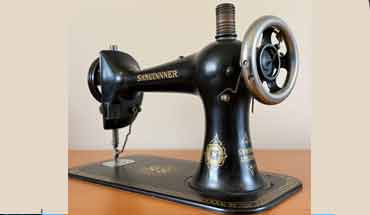Who Invented the Sewing Machine? Crafting Made Easy

Introduction
A sewing machine is a machine designed to sew fabric or clothing together. Sewing has been around ever since man decided to wear clothes. The first needles and threads were made from animal parts such as horns, bones and sinews. Iron needles were invented in the 1500s. When the sewing machine was invented, it made mass production of clothes and fabrics much easier and affordable.
Early Inventors the Sewing Machine
Hand sewing is a slow process. For the clothing and fabric industries, it was also expensive. It meant having to pay more to tailors for work that took very long. So several inventors tried to address the problem by proposing mechanical sewing.
In 1790 an Englishman named Thomas Saint was granted a patent for a sewing machine design. But there is no proof that Saint, a cabinet maker, ever built his machine. Later when a prototype was built based on his descriptions, it didn’t work. So he can’t be considered as the one who invented the sewing machine.
In 1810, Balthasar Kremps of Germany made an unpatented design for sewing caps, but it was ineffective. Earlier in 1804 two patents were issued to two unsuccessful sewing machine designs: One to James Henderson and Thomas Stone in France, and another to John Duncan of Scotland.
Joseph Madersperger of Austria came up with various sewing machine designs in 1814. Even though he got his patent, none of his inventions woked. Four years later in 1818, two Americans, John A. Doge and John Knowles failed in their attempt as well.
Invention of the Sewing Machine
It wasn’t until 1830 that the first successful sewing machine was invented. Its creator was another Frenchman, Barthelemy Thimonnier. His design had a chain stitch made of a single thread and needle. It could make straight seams. Thimonnier, a tailor himself, built 80 machines for his business. But it was destroyed in 1841 by rioting tailors who feared losing their jobs. The inventor himself was nearly killed in the incident.
Commercial Use of Sewing Machines
Several other inventors contributed to the improvement of the sewing machine . But it was Isaac Singer who made the first commercially profitable model. His invention was operated by a foot treadle and the needle moved up and down. Unfortunately for him, Singer got sued by a fellow inventor, Elias Howe, and had to pay him for damages and royalties.
Other Developments
Another notable inventor of sewing machine technology was Helen A. Blanchard. An American from Portland, Maine, she invented several new features. These included the zig-zag stitch for tougher seams, surgical needles and a sewing machine for hats.
In 1889 sewing machines for home use became available. By 1905 these textile devices were being powered by electricity. While some people still stitch by hand, the sewing machine has definitely made it easier to stitch things together.
